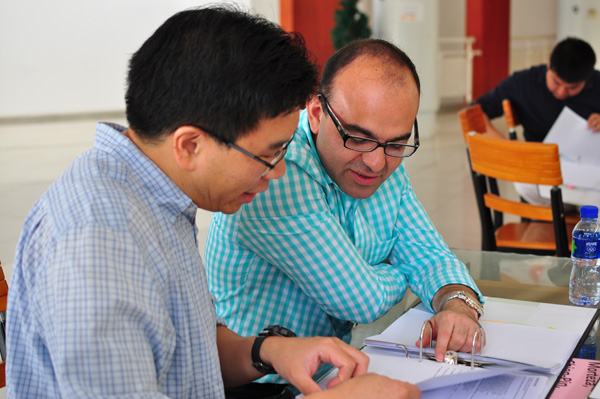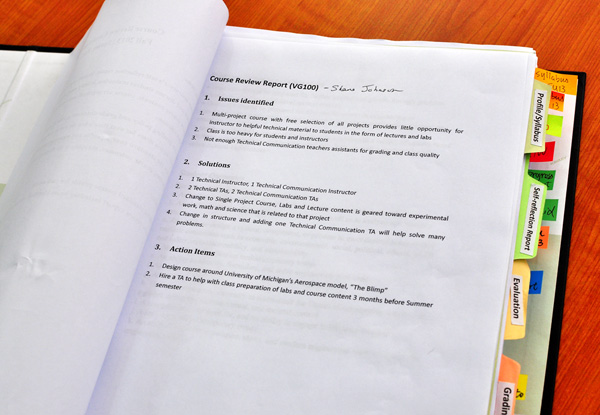In order to reach the goal of undergraduate education and to improve the undergraduate curriculum, the JI Committee on Undergraduate Education organized a course review on May 21. All faculty members attended the meeting to review all courses offered in fall 2013 and spring 2014.

Faculty members were grouped according to their disciplinary areas. During the group session, each faculty member reviewed his/her course in terms of self-evaluation, student evaluations, course contents and requirements, grading standards and grading results. Through evaluations and discussions, the faculty members discovered problems and found solutions to improve the courses. The course review is held twice a year to ensure high level teaching and student quality.

During the review, teachers of the same disciplinary area shared teaching problems and suggested solutions. The active exchange was the key to teaching efficiency and breakthrough of teaching challenges. One purpose of the course review is to create the most suitable curriculum for JI students through faculty cooperation.

Each course review report includes not only the course goal, teaching plan, and syllabus, but also the teacher’s self-evaluation, students’ evaluation of the course, students’ grade report, and sample student projects. Take Vg100 for example: during fall 2013 and spring 2014, a total of six instructors assumed different teaching responsibilities. Thus, the 230-page course review report includes separate reports and comprehensive reviews of all the six instructors.

The course review aims to enhance students’ learning experience and help reach their learning goals through course improvement and innovation. After the course review, JI’s Academic Office will collect all the suggestions and make changes for the future. Take the example of Capstone Design course: It used to contain five stages, i.e., design requirements, design concept, design method, design model, and design expo. For the freshmen, the course load was too heavy. After course review and student feedback, the number of stages was reduced to four and a weekly meeting with instructors was introduced. The result got students’ positive feedback. This is an example of improving a course teaching through course review.
JI is currently undergoing review for ABET accreditation, for which the course review is a requirement. It is also a process for faculty, students, and administration to work together and reach the goal of high-quality engineering education.





